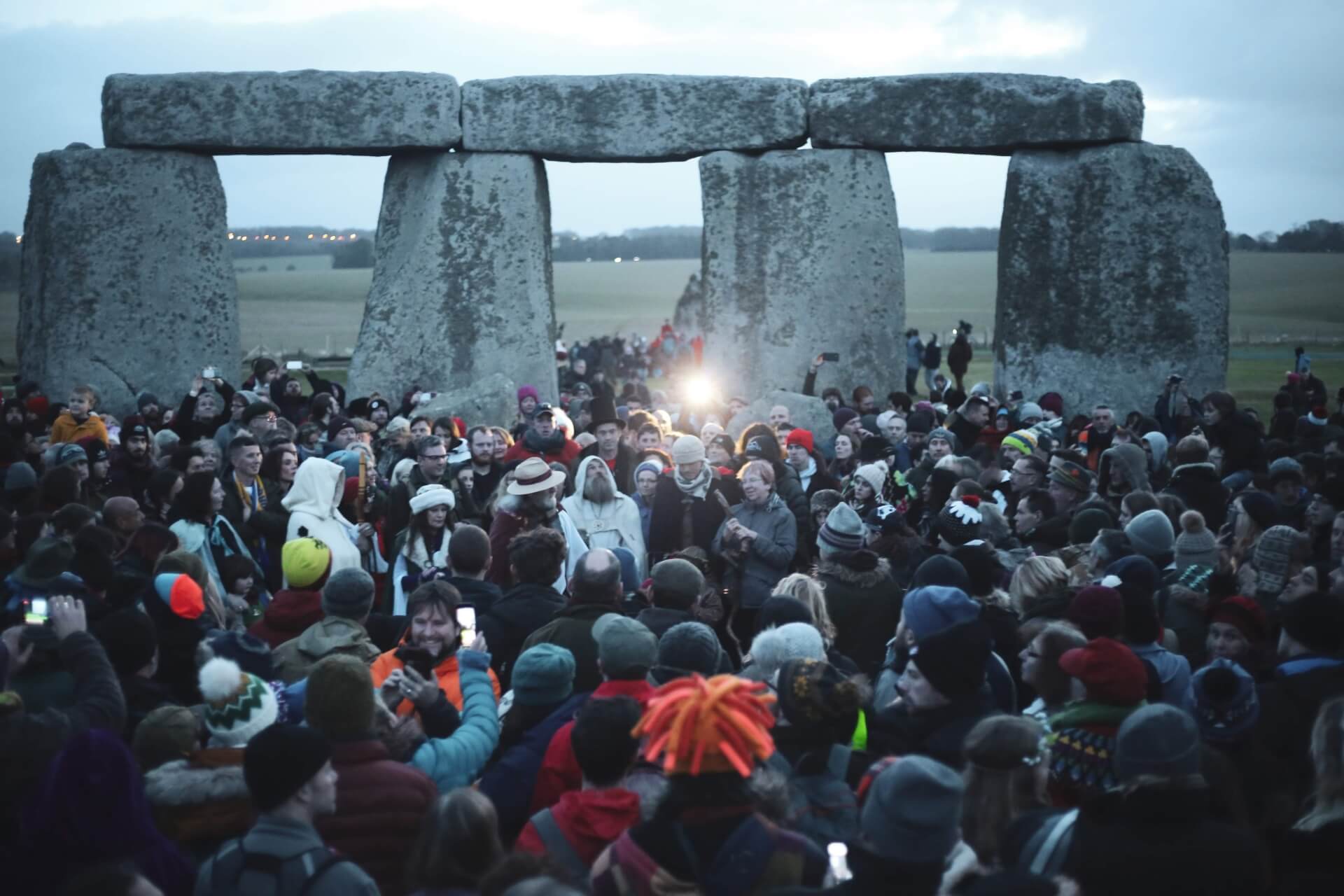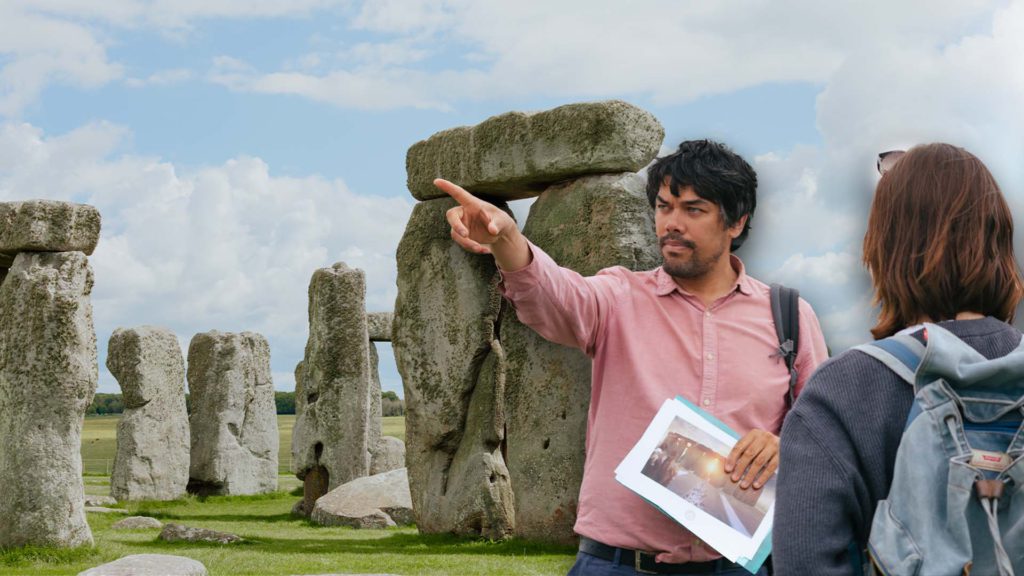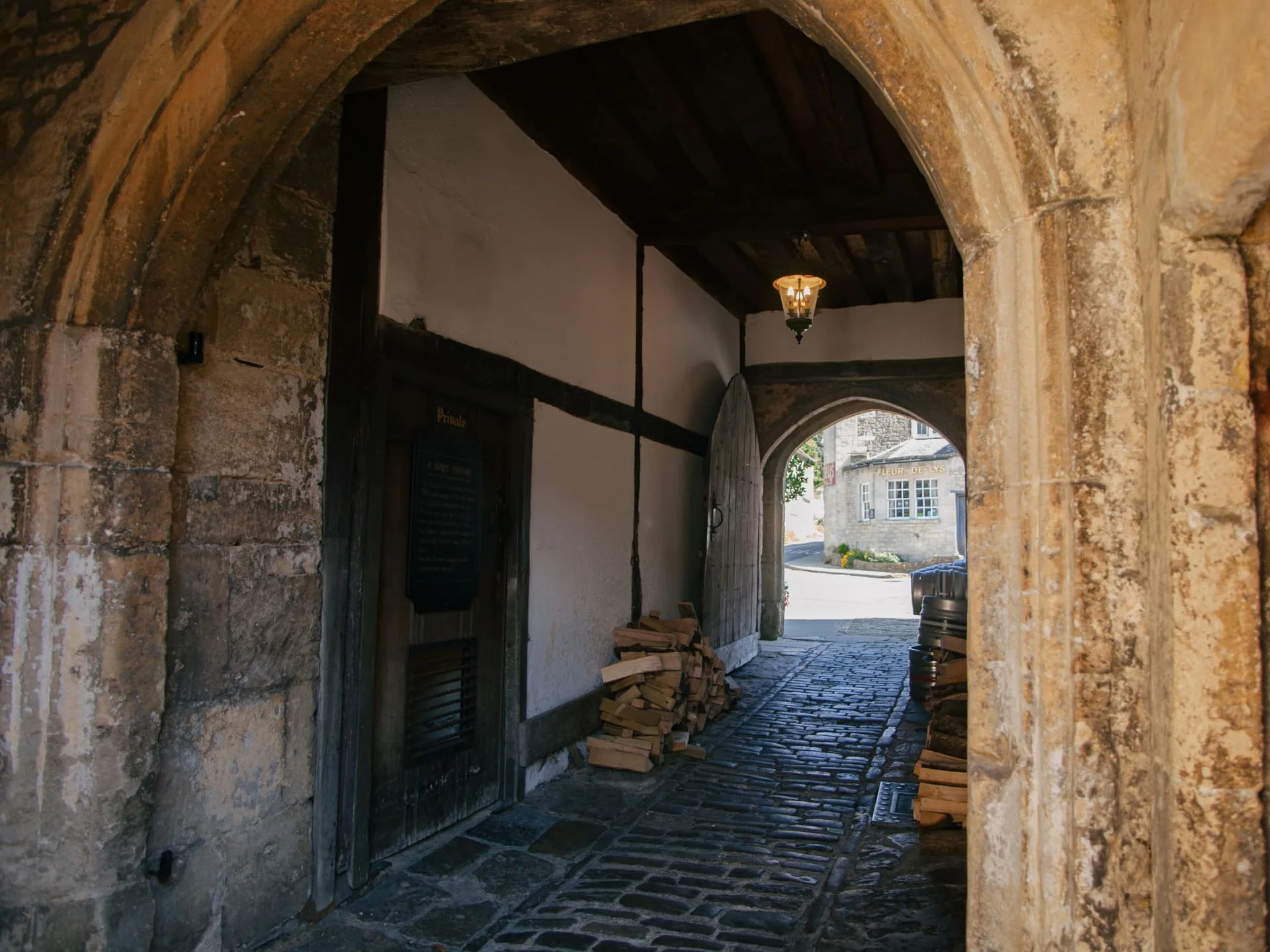
The Best Season to Visit Bath
July 19, 2022
The latest Great West Way Travel Magazine edition is here!
November 30, 2022Visiting Stonehenge for Winter Solstice

In short...
- Stonehenge has been linked to the winter solstice since Neolithic times, with the stones aligned to the setting sun.
- Archaeological evidence shows it was once the site of feasting and rituals marking the return of the “new sun.”
- Today, English Heritage opens the circle for a rare public gathering to watch the sunrise after the shortest day.
- Visitors join Druids, Pagans, locals, and travellers for a unique, spiritual celebration.
- Beyond the solstice, Stonehenge remains a World Heritage site to explore year-round.
The iconic Neolithic monument of Stonehenge forms part of a UNESCO World Heritage site and is rather an incredible sight to behold, its story inspiring awe in the thousands upon thousands of visitors that flock there every year.
Built between 3000 and 2500BC, the Stonehenge megaliths offer incredible insight into our history. We’ve learnt a lot from the area, yet it remains somewhat shrouded in mystery. One of the most intriguing of which is the mystery of its original purpose.
The leading theory is that the original settlers constructed it as an astronomical observatory, tracking the sun’s movements. They realised that, on a certain day twice a year, the sun remarkably seems to ‘stand still’ in the sky. This is the turning point that we now refer to as solstice. The winter solstice marks the shortest day and longest night of the year for those in the Northern Hemisphere, after which the days get progressively longer again.
1) Ancient History of the Winter Solstice
You’ve most likely heard of the summer solstice, whilst the winter solstice seems to get a little less attention. Interestingly, however, the winter solstice would’ve been of much more significance back when Stonehenge was built.
Our ancestors at the time were hunters. Given the outdoor nature of life during this period, the weather played a huge role in their lives. Food was in much shorter supply over the winter months and the solstice was the last feast celebration before heading into the deep winter. Indeed, thanks to archaeological analysis of animal bones found at the nearby Neolithic settlement of Durrington Walls, it’s believed that this is when our Neolithic ancestors would slaughter and feast on animals born in the spring, so that they wouldn’t need to feed the animals through the winter.
It was also a celebration of rebirth and a time to welcome in the ‘new sun’. Of course, today we’re lucky enough to have much more knowledge about the way the solar system works, so we can be sure that the sun will once again return and the days will get longer. For our ancestors of this time, however, believing that they wouldn’t be left in an eternal winter was an act of faith.
The configuration of the stones themselves suggests the winter solstice’s immense importance. When visiting Stonehenge today, you'll find only one of the stones of the tallest trilithon still standing. Back when it was built, however, the Great Trilithon actually aligned to the central axis. This meant that the winter solstice sun would’ve set directly between the two upright stones when viewed from the centre of the circle. This particular trilithon stood at the head of the inner horseshoe of stones, suggesting the importance the Neolithic people bestowed upon the occasion.
2) Joining the Solstice Celebration Today
This intrinsic link between the winter solstice and Stonehenge means that the stone circle plays host to what is potentially the most famous solstice celebration worldwide. On the first morning after the shortest day of the year, people of all sorts of backgrounds and religions gather among the stones to witness the sunrise and perform sacred rituals. Visitors aren't usually permitted within the stone circle for conservation reasons, but English Heritage, who now care for Stonehenge, welcome people into the circle to celebrate the special moment of the first sunrise after the winter solstice.
The solstice usually falls on 21st December, though occasionally it lands on the 22nd (next time will be 22 December 2033).
Find more visitor information check out the English Heritage Winter Solstice page.
3) What to Expect from the Experience
Find yourself in the centre of the stones and you’ll be immersed in a deep-rooted spiritual celebration dating back millennia. You’ll join locals, spiritualists, historians, environmentalists, tourists and travellers and people from all sorts of religions, not least the modern day Druids and Pagans, as they unite to celebrate.
It’s a celebration that spans the globe, but there’s nowhere better to experience the solstice than Stonehenge, with its unquestionable tie to our history. Revellers sing, dance, pray, play instruments, connect with the stones, do yoga and perform religious rituals as the sun rises over the monument. As the crowd grows calm and quiet to witness the sun emerging, it’s not unusual to feel the celebration is akin to a religious experience. It’s a truly worldly and wondrous occasion.
With a palpable feeling of authentic connection with the earth and its movements, the morning instantly remedies our detachment from nature. It’s a unique chance to glimpse into our history. Stand in the same spot many ancestors before have; welcome in the joyous sunrise that meant so much to them. As you gaze through the stones, watching the sun as it finally peeks up over the horizon, you may find yourself contemplating the mystery of the area and of our histories – how it came to be all those years ago and how you came to be stood here today, taking it all in.
4) Stonehenge Beyond the Solstice

The whole morning is a true celebration of the universe and rather an incredible experience; one that you’ll be sure to retell over and over again. We hope we’ve managed to convince you why you should visit Stonehenge for winter solstice in this blog. It's well worth a visit, in our opinion.
But don't forget, Stonehenge's allure extends far beyond the solstice. Any time of the year, this ancient wonder awaits your exploration. Join us on a journey from Bath to Stonehenge, and let's delve into the mysteries of the area together. Discover the secrets of Stonehenge and uncover the hidden gems of England with us.
Jules & the Team at In & Beyond Bath

ABOUT THE AUTHOR
Jules Mittra
Ex-history teacher & tour guide, he has both academic insight as well as on-ground expertise.












